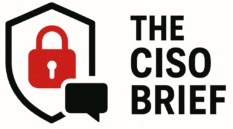Summary Points
-
Partnership Announcement: Microsoft and CrowdStrike have collaborated to link aliases of threat groups without establishing a single naming standard, aiming to streamline threat intelligence.
-
Updated Reference Guide: Microsoft has enhanced its threat actor reference guide, integrating common hacking group names from both firms for improved alignment in diverse security environments.
-
Community Initiative: This effort is just the first step; major cybersecurity firms like Google/Mandiant and Palo Alto Networks are set to join, enhancing clarity in threat attribution and collaboration.
- Analyst Collaboration: The partnership has already reconciled over 80 sophisticated threat actors through direct analysis, emphasizing the need for a community-led approach to combat cyber threats effectively.
Problem Explained
In a strategic collaboration announced today, Microsoft and CrowdStrike unveiled a pioneering initiative aimed at enhancing cybersecurity intelligence accessibility by interlinking the various names attributed to specific threat groups. Rather than imposing a unifying naming convention, the partnership focuses on creating a reference guide that aligns the distinct terminologies utilized by each firm’s security analysts. This project, designed to facilitate swifter responses to cyber threats, will navigate the complexities of disparate naming systems and is regarded as a stepping stone in harmonizing the intelligence landscape. Vasu Jakkal, Corporate Vice President for Microsoft Security, emphasized that this effort seeks to empower the security community to act more efficiently in combating cyber adversaries.
The initiative, poised to expand with contributions from additional cybersecurity firms such as Google/Mandiant and Palo Alto Networks’ Unit 42, aims to streamline attribution processes and mitigate confusion surrounding overlapping threat actor activities. Through collaborative mapping efforts, Microsoft and CrowdStrike have already resolved discrepancies concerning more than 80 notorious threat actors, marking a significant stride in fortifying cybersecurity defenses. As Adam Meyers, Senior Vice President for Intelligence at CrowdStrike, noted, the success of this endeavor relies on the collective involvement of the cybersecurity community, fostering a united front against increasingly sophisticated cyber threats.
Security Implications
The collaboration between Microsoft and CrowdStrike in developing a unified mapping of threat group aliases presents both opportunities and risks for various stakeholders, including businesses, users, and organizations reliant on cybersecurity measures. While this initiative aims to enhance clarity and efficiency in threat intelligence by linking disparate naming conventions, the absence of a standardized nomenclature may inadvertently propagate confusion among security teams that must swiftly respond to cyber threats. If these entities find themselves navigating a labyrinth of inconsistent threat designations, the potential for miscommunication increases, complicating incident responses and undermining trust in shared intelligence. Moreover, as more cybersecurity firms join this effort, the risk of information overload could exacerbate the challenges of distinguishing between legitimate threats and benign activities, leading to a scenario where critical vulnerabilities go unaddressed due to misplaced focus. Ultimately, while this initiative seeks to foster collaboration, it underscores the essential need for coherent communication and shared understanding among all players in the cybersecurity landscape to effectively mitigate the risks posed by increasingly sophisticated adversaries.
Possible Next Steps
Timely remediation in cybersecurity is crucial, especially in the context of partnerships like that of Microsoft and CrowdStrike, which aim to link hacking group names to enhance threat detection and response.
Mitigation Steps
- Incident Response Planning
- Develop a comprehensive incident response plan.
- Threat Intelligence Sharing
- Foster collaboration for real-time intelligence sharing.
- Regular Updates
- Implement frequent software and system updates.
- User Education
- Conduct ongoing security awareness training.
- Vulnerability Management
- Regularly assess and patch vulnerabilities.
- Adaptive Security Posture
- Employ dynamic security measures based on threat landscapes.
NIST CSF Guidance
The NIST Cybersecurity Framework emphasizes the importance of continuous monitoring and adaptive responses to threats, stating that organizations must develop capabilities to detect, respond, and recover from incidents effectively. For further exploration, refer to NIST SP 800-53, which outlines controls and best practices for risk management and security.
Explore More Security Insights
Stay informed on the latest Threat Intelligence and Cyberattacks.
Explore engineering-led approaches to digital security at IEEE Cybersecurity.
Disclaimer: The information provided may not always be accurate or up to date. Please do your own research, as the cybersecurity landscape evolves rapidly. Intended for secondary references purposes only.
Cyberattacks-V1

